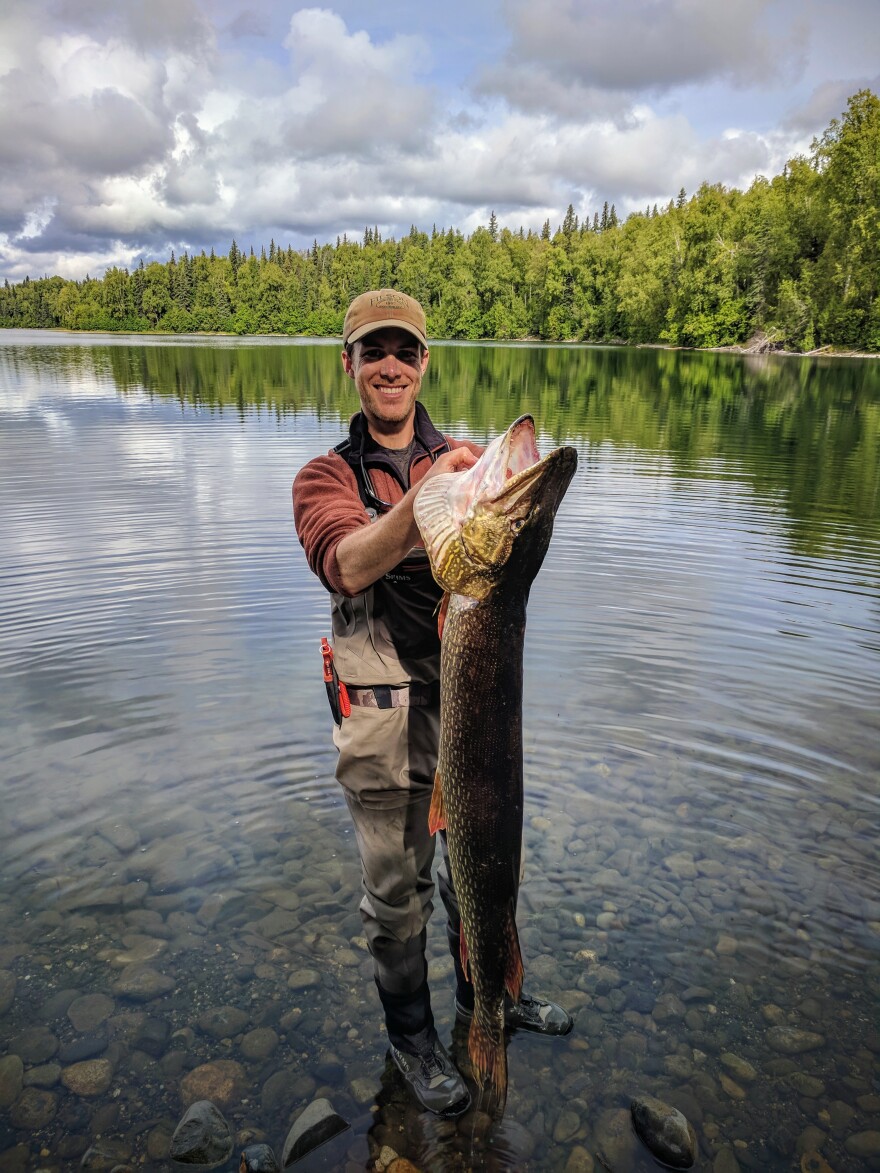Biologists have been working on eliminating northern pike from Kenai Peninsula lakes and streams for years. Northern pike are native to Alaska north of the Alaska Range in areas like Bristol Bay and Fairbanks, but they were introduced to lakes in Southcentral in the mid-20th century. Since then, they’ve been stuffing themselves on salmon fry and degrading salmon runs in the Mat-Su Valley, Anchorage, and the Kenai Peninsula.
"You get down in Southcentral where pike have been on the landscape 60 years or so—we have a before and after picture," said Krissy Dunker, who manages the Southcentral Alaska Invasive Species program for the Alaska Department of Fish and Game. "We know certain systems that used to produce coho, chinook and other things, and those are gone now. It’s just pike."
While Fish and Game is actively working to remove the last known pike infestation on the Kenai Peninsula from the Miller Creek drainage, which is north of Nikiski on the Kenai National Wildlife Refuge, pike are still pretty well established in freshwater streams and lakes in the Mat-Su valley. They are ambush predators, so they hang out in the weedy areas of lakes and prey upon unsuspecting salmon fry that are growing up in the freshwater before they head out to sea.
Over time, they wear down the number of salmon returning. One unanswered question has been what kind of salmon they affect most and what kinds of habitats in Southcentral are the most vulnerable. Chase Jalbert, a biologist with Fish and Game, dug into that with a recent study on the Mat-Su.
"Remember, this is an ongoing invasion," he said. "So this paper really gets at we’re looking at the entire Southcentral, so we’re identifying areas that really have no been invaded yet, so that’s kind of the key point, to figure out how to best allocate resources the department has."
Jalbert studied three major components that play into salmon vulnerability to pike—natural colonization, human-assisted colonization, and habitat overlap. The study turned up that about 1,000 kilometers of streams in the Mat-Su valley qualified as highly vulnerable, and the three species most affected were pinks, silvers, and chums.
Part of the reason for that is the amount of time they spend in freshwater, and where their rearing habitats overlap with pike.
"I think the base thing it really has to do with is life history, and kidn of their habitat usage, so where these fish are found, and particularly where juveniles are," he said. "So I think that the big driving factor behind those results are they require fairly similar habitat as juveniles as pike, so they’re found in the same areas."

Habitat variations across the state and even in Southcentral can lead to varying effects of pike invasion. In some habitats, they seem to coexist with salmon because of additional hiding places, or refugia, for the salmon. For example, in Bulchitna Lake, which is where Fish and Game thinks the first pike were introduced into the Mat-Su valley in the 1960s, the pike have been able to get really large, but there are still salmon in the lake. In other lakes, the pike have essentially eaten themselves out of house and home—to the point where there is literally nothing in the lake but pike. Dunker said that in a recent survey over in Anderson Lake, Fish and Game turned up nothing but a ton of tiny pike, where they were likely eating tiny invertebrates to survive.
The study does have limitations—it didn’t consider outmigration time or the life history differences between salmon species. Jalbert said the study may have underestimated sockeye vulnerability to pike because of the lack of modeling for them, in part because of the complexity of their lifecycle and dependence on lakes. Past evidence from Fish and Game and other agencies, like the Cook Inlet Aquaculture Association, has shown that pike can predate heavily on sockeye fry, too.
He said the model he used could potentially be expanded into other areas with similar habitats, like the Kenai Peninsula, to predict vulnerable habitats. Dunker says that Fish and Game, in cooperation with other agencies that manage invasive species, could use models like Jalbert’s to help prioritize which areas to protect.
"There's a lot of partners that are working together on this, so we are organizing across all these different agencies this large committee and this management plan," she said. "We're really trying to work together to come up with a list of projects and list of places that are highest concern. And that's exactly where Chase's work is so valuable in informing that and any future studies that come from that will be so valuable in informing that."
The agencies are working on a comprehensive plan to approach invasive pike management, but the best treatment is always prevention, she says—both for pike, which have been transported intentionally into new lakes, and other invasives, like goldfish, muskies, and invasive plants. Fish and Game reminds boaters to clean, drain and dry their boats and float planes as well to prevent the transportation of aquatic invasive species like elodea or zebra mussels.
Reach Elizabeth Earl at elizabethearl@gmail.com.


